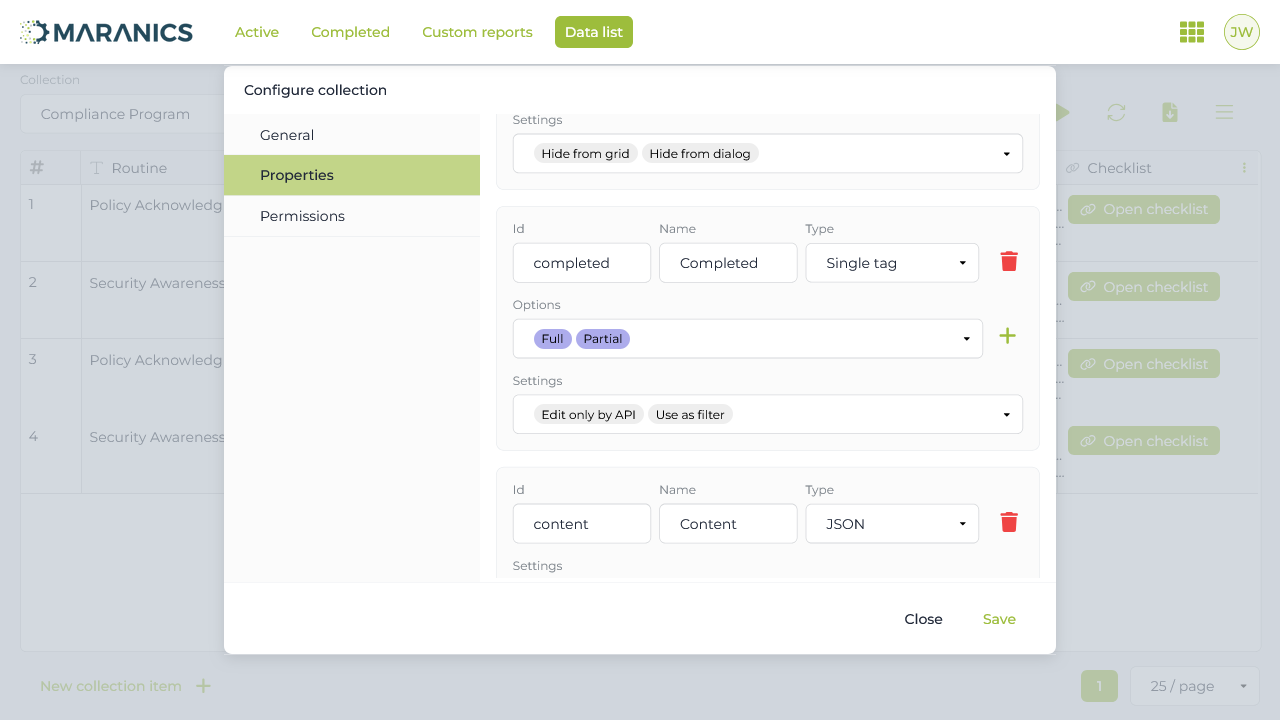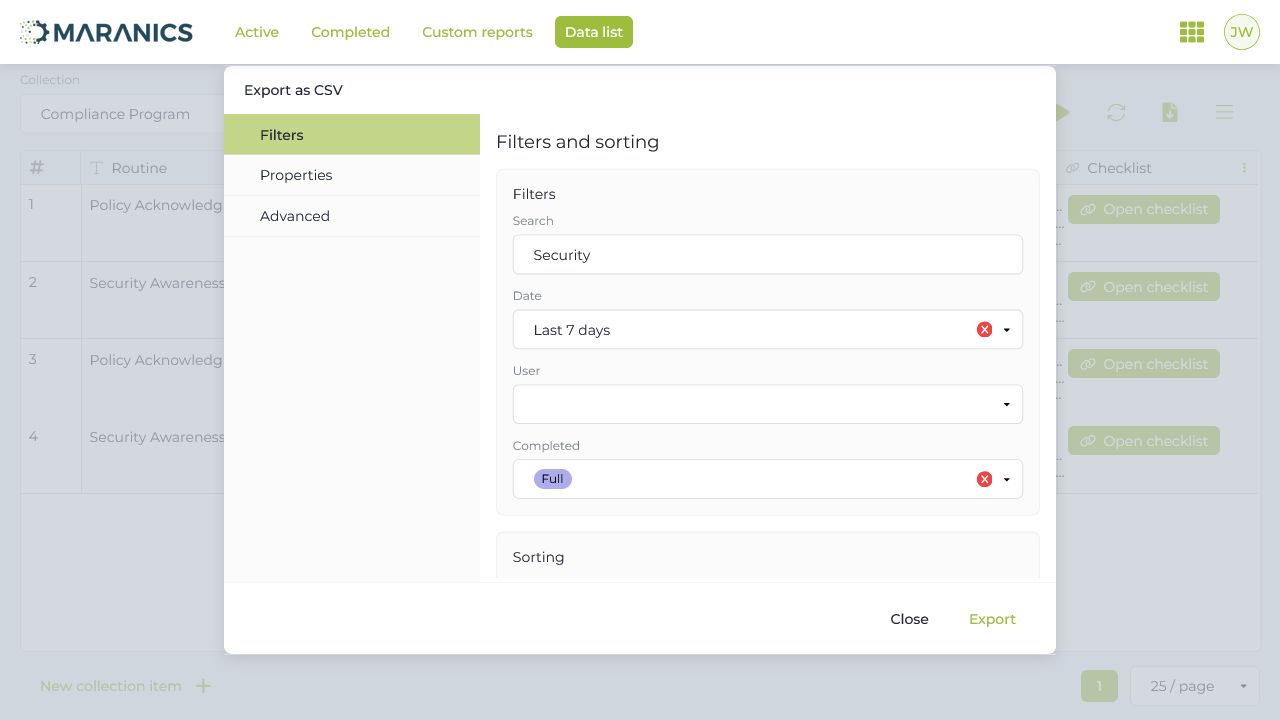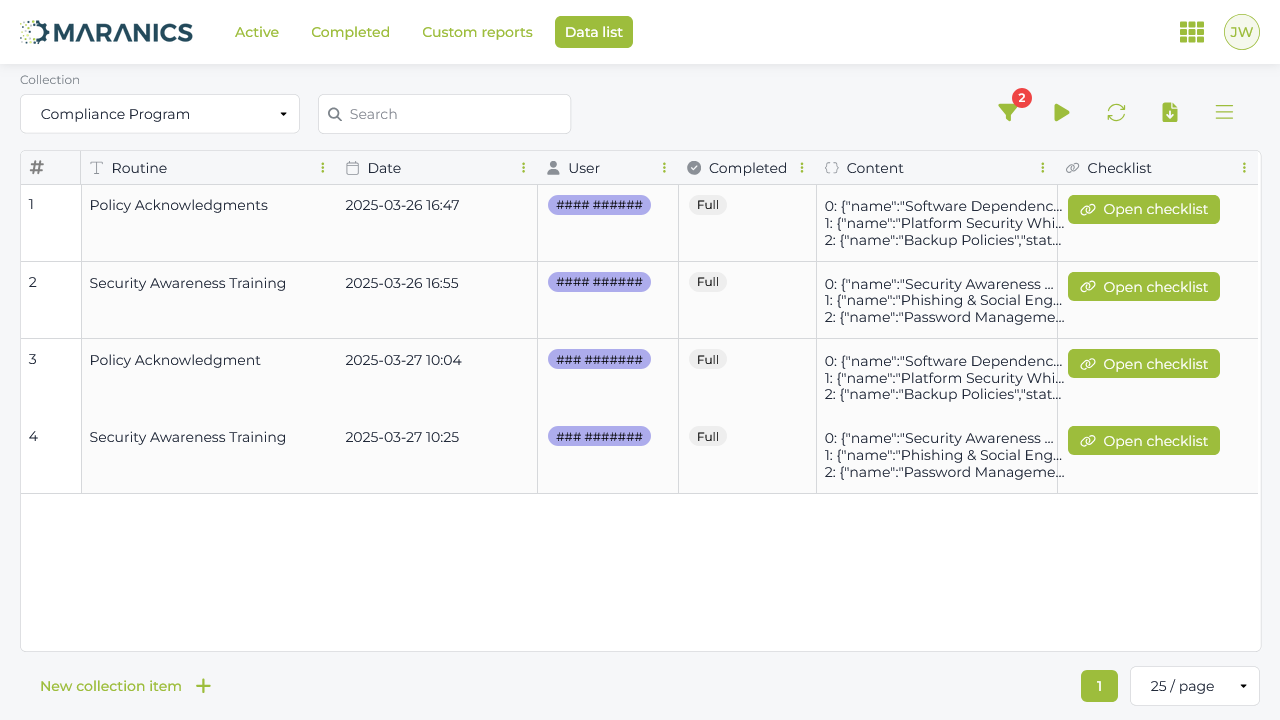Views, Filters, Actions: What’s New in the Data List

Over time, many of our tools evolve quietly in the background—shaped by real-world use, feedback, and new requirements. One of these tools is Data List, a core component of Flow Manager that has grown into a flexible, powerful part of many customer workflows.
In this post, we’re putting the spotlight back on the Data List—sharing what it can do today, what’s new, and how it fits into automated, scalable processes. Whether you’ve used it before or are seeing it for the first time, there’s a lot to discover.
📚 Core Concept
The Data List is a dynamic record viewer built into the Flow Manager. At a glance, it looks like a simple list—but under the hood, it’s a fully configurable system that can adapt to any structured dataset.
With the table selector, users can switch between multiple predefined lists. Each list acts as a view into a specific data model, tailored to match different use cases—whether it’s tracking open tasks, completed checklists, regulatory submissions, or anything in between.
The strength of the Data List lies in its flexibility. It’s not hard-coded to a single use case. Instead, it adapts to your structure, your permissions, and your workflows.
⚙️ Column & Permission Configuration
Data List is built to adapt—not only to different data structures, but also to different users and roles within your organization.
Each list can be configured with role-based and user-specific permissions, defining who can view, edit, manage, or trigger actions. This ensures the right people have the right level of access without compromising control.
Every column is fully configurable. You can define its type, decide whether it's visible or read-only, and control whether it should be available for filtering or exporting. This flexibility allows teams to build views that are both focused and relevant—whether it’s a simple summary or a detailed audit log.
All of this is managed through a clear, visual interface—no coding required.

🔍 Views, Filters & Search
Working with large datasets can be overwhelming—but the Data List makes it easy to find exactly what you need. With built-in search and filtering, users can quickly narrow down results based on any combination of fields.
To make recurring work easier, users can save custom views—each with its own filters, sorting, and column layout. These views can be shared across the organization, making it simple to standardize reporting or collaborate on specific subsets of data.
Whether you're tracking open tasks, monitoring deadlines, or reviewing submissions, the combination of filters, saved views, and full-text search turns the Data List into a fast and focused workspace.
⚡ Custom Actions & Automation
Beyond just viewing data, Data List acts as a launchpad for action. You can define custom actions directly within a list—making it possible to trigger processes without leaving the interface.
These actions connect with our low-code automation workflow engine, allowing you to respond instantly to changes or user input. For example, you can start a checklist, send notifications, kick off a review, or sync with external systems.
Each action emits events that other tools can listen for, enabling seamless cross-tool workflows. This transforms Data List from a passive view into an active part of your operations.
📤 CSV Export
We recently introduced a more flexible way to export data from Data List. Instead of downloading the entire dataset, users can apply filters and sorting to refine exactly what they want to export. This allows you to narrow your view first—and then export only the data that matters.
You can also define which columns to include and configure advanced CSV settings to match formatting or system requirements. Whether you're preparing data for reporting, auditing, or integration, the export process is now faster and more precise.

🧩 Integration & Selection Control
To further strengthen how Data List connects with the rest of the platform, we’ve added two important capabilities.
First, the Data List now emits events that can be picked up by our automation workflows. This means that changes in a list—like adding a new entry or updating a record—can automatically trigger downstream actions. Whether that’s sending notifications, starting a checklist, or syncing data with another system, everything happens in real time and without manual intervention.
Second, we’re preparing to release a new control in our template app that will let end users select records from a Data List directly within a checklist. This will add a new level of flexibility to dynamic form generation—allowing users to pull in structured data exactly when and where it's needed.
Together, these features deepen the integration between lists, automation, and the user-facing experience—closing the loop between data and action.
🚀 Performance & API
Powerful tools only matter if they scale — and the Data List was built with performance in mind. Whether you're working with hundreds or hundreds of thousands of records, the experience remains fast and responsive.
Behind the scenes, the system is optimized for speed, with smart indexing and efficient data handling that keeps performance consistent, even under load.
For teams looking to integrate deeply, we’ve also exposed a simple and intuitive API. This allows other systems to push data into the list, query it, trigger actions, or automate entire workflows around it. Whether you’re syncing with a third-party system or building internal tools, integration is straightforward.
In short, the Data List doesn’t just handle large-scale data—it invites automation and system-to-system communication by design.
📄 Use Case: Compliance Tracking
One of the best ways to understand the flexibility of Data List is by looking at how we use it internally.
As part of our compliance process, our system automatically generates checklists for each employee at defined intervals—based on regulatory or policy requirements. These checklists are completed to confirm compliance with specific standards.
Once submitted, the results are automatically published into a Data List, creating a structured, traceable log. This allows the team to monitor status, verify completions, and produce audit-ready reports instantly.
No spreadsheets. No reminders. Just a fully automated loop, with Data List as the central record of truth.

🧭 Ready to Explore
Data List has become a valuable addition to our platform—complementing existing tools by offering a flexible, configurable way to work with structured data. It’s tightly integrated with our automation engine, easy to adapt to different use cases, and built to support both daily operations and long-term traceability.
We’re proud of the progress so far and grateful to the team for continuously improving this tool. It’s a great example of how a focused, well-integrated component can deliver real impact.
To all our customers: if you haven’t explored Data List yet, now is a great time to try it. It’s built to support your process—whatever that looks like.

